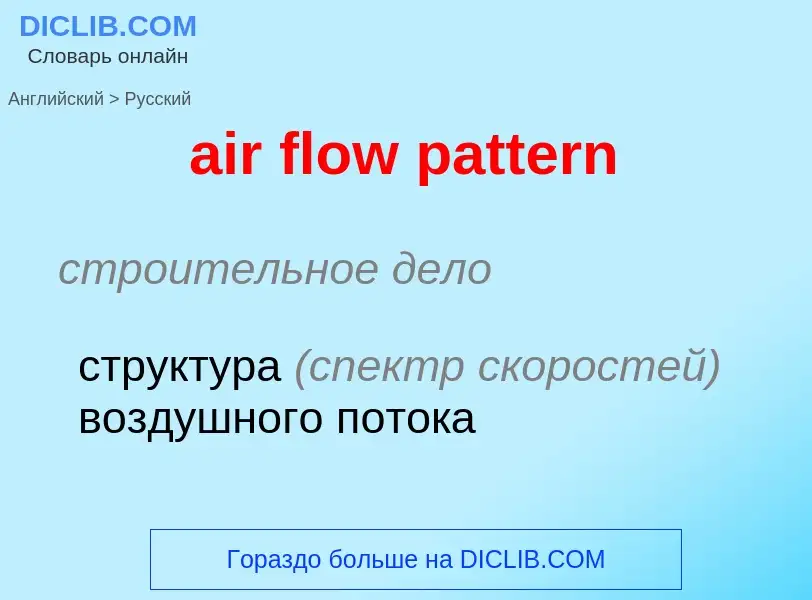Перевод и анализ слов искусственным интеллектом ChatGPT
На этой странице Вы можете получить подробный анализ слова или словосочетания, произведенный с помощью лучшей на сегодняшний день технологии искусственного интеллекта:
- как употребляется слово
- частота употребления
- используется оно чаще в устной или письменной речи
- варианты перевода слова
- примеры употребления (несколько фраз с переводом)
- этимология
air flow pattern - перевод на русский
строительное дело
структура (спектр скоростей) воздушного потока
медицина
поток воздуха
нефтегазовая промышленность
воздушный поток, течение воздуха
['eəfləu]
существительное
общая лексика
воздушное течение
воздушный поток
строительное дело
раскрой листового материала (операция)
['pætnmeikə]
существительное
общая лексика
модельер
модельщик (в металлургии)
металлургия
модельщик
['pætnrekəg'niʃ(ə)n]
общая лексика
распознавание образов
идентификация графических изображений с помощью компьютерных технологий. Используется, в биометрических методах контроля доступа для распознавания голоса, отпечатков пальцев, фотографий и. п
Определение
Википедия
In physics, physical chemistry and engineering, fluid dynamics is a subdiscipline of fluid mechanics that describes the flow of fluids—liquids and gases. It has several subdisciplines, including aerodynamics (the study of air and other gases in motion) and hydrodynamics (the study of liquids in motion). Fluid dynamics has a wide range of applications, including calculating forces and moments on aircraft, determining the mass flow rate of petroleum through pipelines, predicting weather patterns, understanding nebulae in interstellar space and modelling fission weapon detonation.
Fluid dynamics offers a systematic structure—which underlies these practical disciplines—that embraces empirical and semi-empirical laws derived from flow measurement and used to solve practical problems. The solution to a fluid dynamics problem typically involves the calculation of various properties of the fluid, such as flow velocity, pressure, density, and temperature, as functions of space and time.
Before the twentieth century, hydrodynamics was synonymous with fluid dynamics. This is still reflected in names of some fluid dynamics topics, like magnetohydrodynamics and hydrodynamic stability, both of which can also be applied to gases.

![Flow around an [[airfoil]] Flow around an [[airfoil]]](https://commons.wikimedia.org/wiki/Special:FilePath/Flow around a wing.gif?width=200)




.jpg?width=200)
![Fitting a nettle/canvas-fabric on a [[dress form]] Fitting a nettle/canvas-fabric on a [[dress form]]](https://commons.wikimedia.org/wiki/Special:FilePath/Fitting muslin dummy.jpg?width=200)
.jpg?width=200)



![tailor's tack]] with thread to mark a pattern on fabric before cutting the fabric tailor's tack]] with thread to mark a pattern on fabric before cutting the fabric](https://commons.wikimedia.org/wiki/Special:FilePath/Basting pattern markings.jpg?width=200)



![The face was automatically detected]] by special software. The face was automatically detected]] by special software.](https://commons.wikimedia.org/wiki/Special:FilePath/800px-Cool Kids of Death Off Festival p 146-face selected.jpg?width=200)
